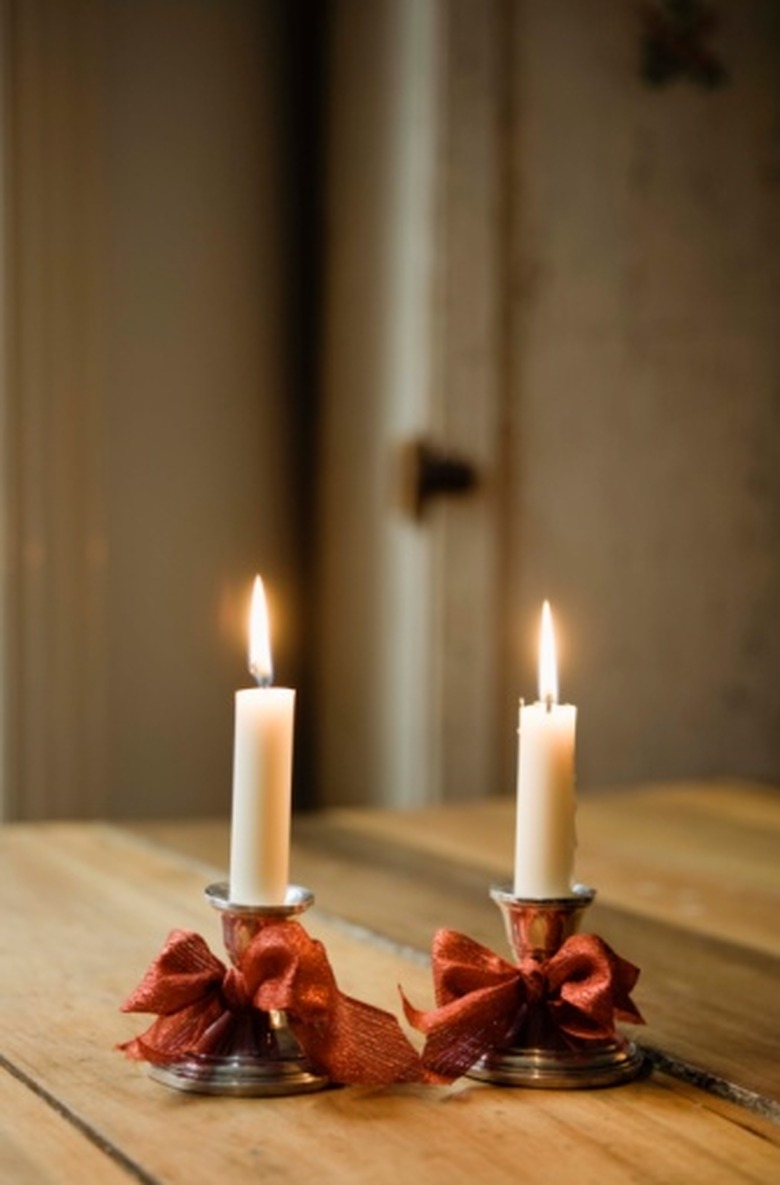Science Fair Project Ideas On Candles
Candles have been used for light for as long as man has lived. They can warm a room with their flickering displays of light, set a festive mood for the holidays and be literal lifesavers during power outages. Don't overlook their value at science fairs, for candles can be the genesis of instructional experiments, too.
What do Candles Burn?
What do Candles Burn?
Assemble a clear glass canning jar, a cereal bowl, some molding clay and dye to color water. Place the clay in the bottom of the cereal bowl and then lodge the candle in the clay to hold it firmly in place. Take some dark purple food coloring and add 3 tablespoons to a glass of water. Carefully light the candle and place the jar over the top so that it goes to the bottom of the water in the bowl. Notice that the candle goes out and the water level changes. The fact that the candle has gone out shows that it uses up air (oxygen) to burn and that the level of the water reflects the fact that water is a byproduct of combustion.
Making Candles
Making Candles
Show fair-goers how candles are made. Buy candle wicks at your local hardware store, supermarket or online. You can make posters or a video that talks about the melting point of wax. Bring a hotplate and an old pan to melt the wax. You will need forms to pour your wax into. You can use several different materials for your wicks, such as shoelaces, thread and jute string. Then you can explain that the amount of wax absorbed by the wick influences its efficiency. (Be very careful when handling hot wax because it can cause burns.)
Burning Rates
Burning Rates
There is a hypothesis that white candles burn faster than colored ones. To test this, buy white (uncolored wax) candles, blue candles, green candles and other colored candles, all of the same shape and size. Put a large, visible timer on your display table and light the candles at the same time. Start the timer. Have a large chart to record how long it takes for each candle to burn 1 inch. At the end of the fair, you can prove or disprove your hypothesis.
Tips for a Good Project
Tips for a Good Project
You should make your project interesting by using colorful posters or making interesting informative videos. Models and and hands-on materials keep visitors interested. Also, be sure that your project and display are safe. Make sure that your electric supply can handle your hot plate and that you can safely pour out the wax from your pot. You should place a fire-resistant top on your table so that if a candle falls over, it won't start a fire. Candles can cause burns, so use caution when working with them. Be very sure that the information you present is factually correct.
Cite This Article
MLA
Belzer, Les. "Science Fair Project Ideas On Candles" sciencing.com, https://www.sciencing.com/science-fair-project-ideas-candles-7961244/. 24 April 2017.
APA
Belzer, Les. (2017, April 24). Science Fair Project Ideas On Candles. sciencing.com. Retrieved from https://www.sciencing.com/science-fair-project-ideas-candles-7961244/
Chicago
Belzer, Les. Science Fair Project Ideas On Candles last modified August 30, 2022. https://www.sciencing.com/science-fair-project-ideas-candles-7961244/
